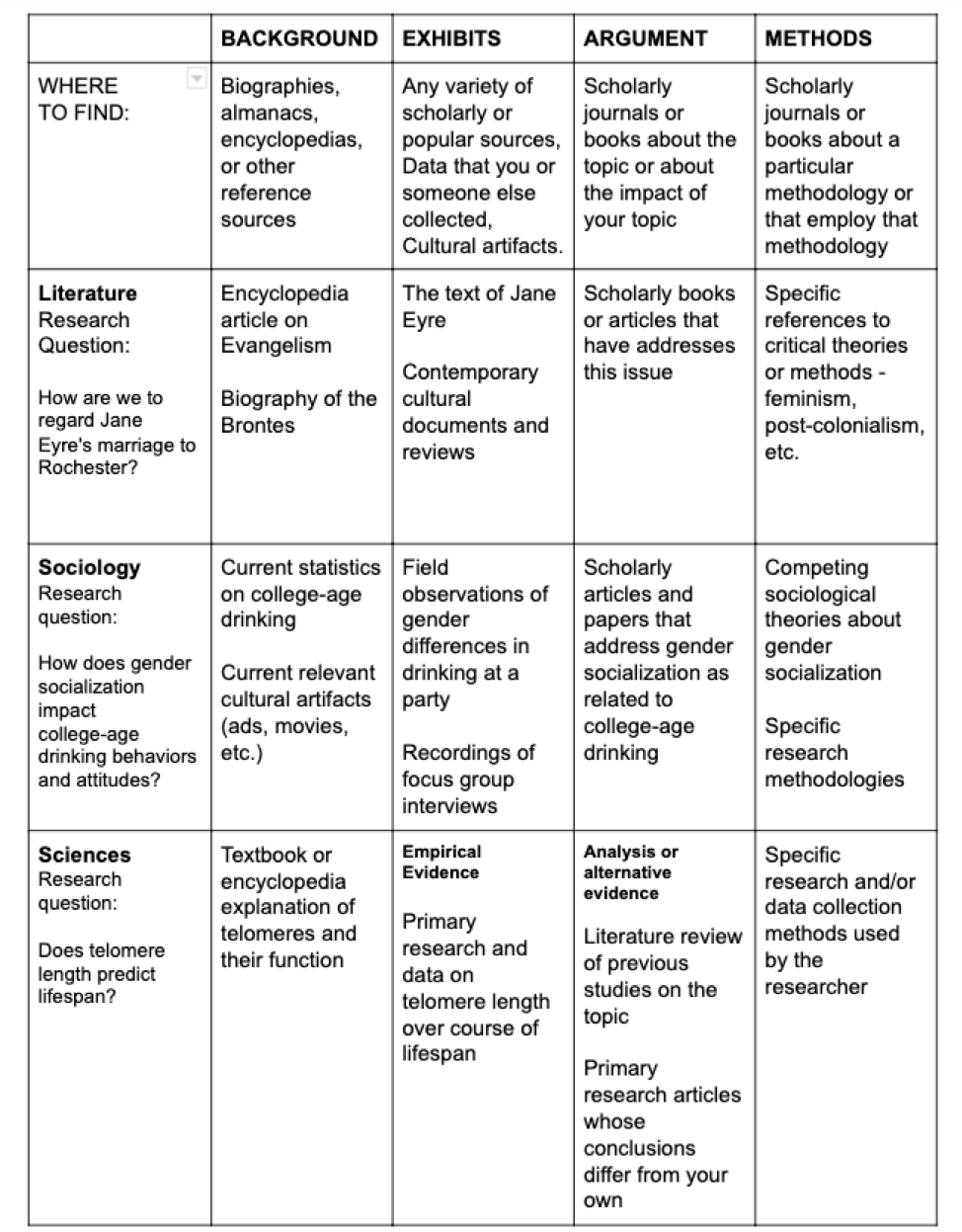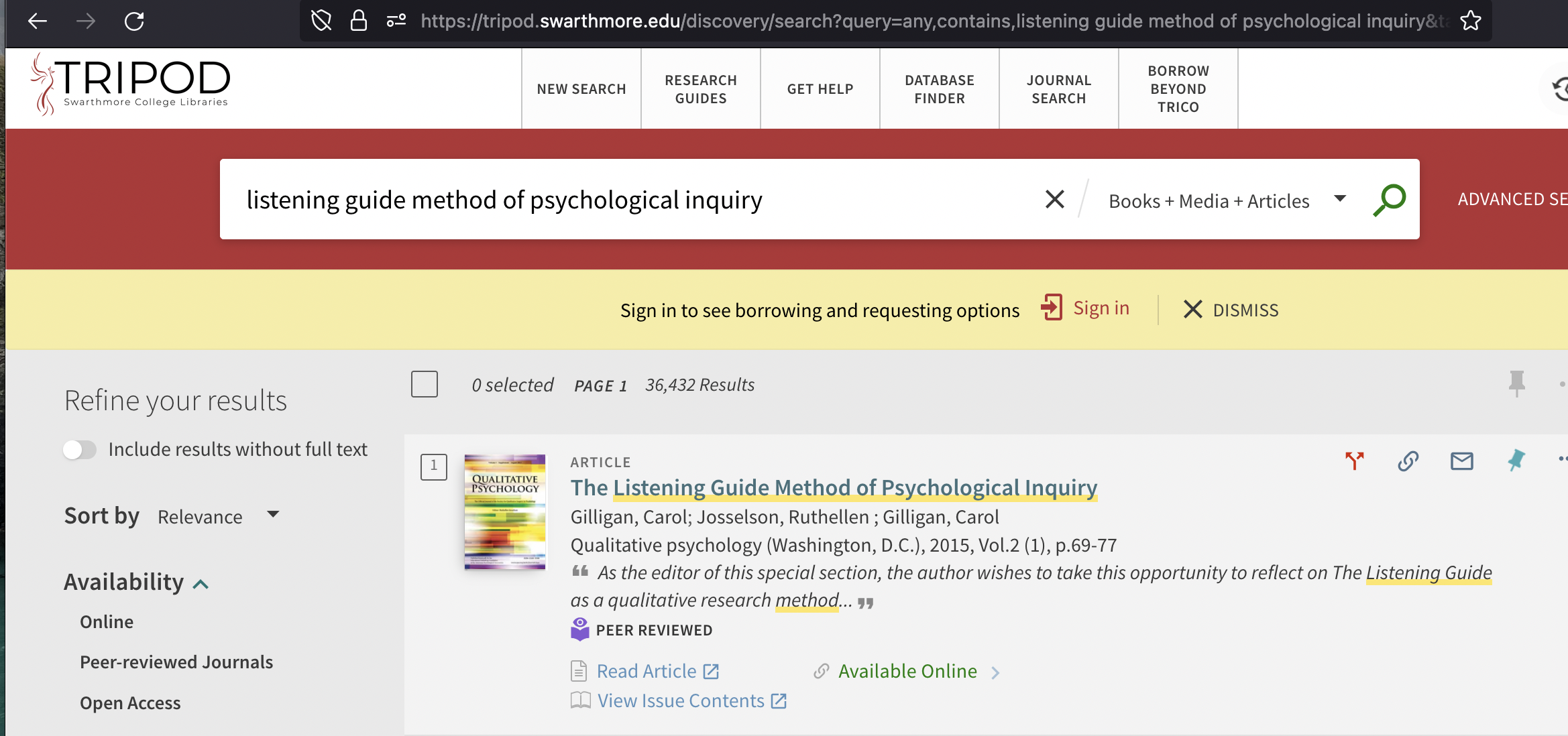Research + the Libraries
Key skills and resources for Summer Scholars
S3P 08-21-2023
Andrea Baruzzi (she/her)
Science & Engineering Librarian
Simon Elichko (they/them)
Social Sciences & Data Librarian
+ Introduction to the libraries
+ What is research?
+ How do we find it?
What are we doing here?

Resources
Advice
Services
Spaces
{Subscriptions, Books, Journal Articles, Databases}
{Research help from librarians + RIAs}
{Requesting articles, Borrowing books from other libraries}
The Libraries
{McCabe, Cornell, Underhill}
(+ a lot more!)
What is Research?
process
(something you do)
stuff
(something you find)
"I’m studying drosophila to determine whether odor changes mating behavior."
"I'm looking for articles on
olfactory response in the mating behavior of drosophila."
Kinds of resources
- Print books
- Print journals
- eBooks
- Online journals
- Articles
- Book chapters
- Data and Statistics
- Maps
- Magazines and Newspapers
- DVDs and streaming video
Where do we find research (articles, books, etc.)?
Some useful tools:
-
Research Guides
-
Databases (Web of Science, JSTOR)
-
Google Scholar (scholar.google.com)
Research skills we'll go
over in this session:
-
Following leads in other scholars' works
-
Recognizing different types of sources
-
Finding research articles about a topic of interest
-
Evaluating whether a source may be useful for you
Following leads in other scholars' works
Let's take a look at an example from Niobe Way and Joseph Nelson's book chapter, "The Listening Project: Fostering Curiosity and Connection in Middle Schools."
When you're exploring a topic, you can often find helpful leads by looking at the articles, books, and other sources cited by other scholars.

Journal Article
Book
To follow these leads, it's helpful to recognize what kind of sources are being cited. You can learn to recognize these patterns.
Following leads: recognizing different types of sources
Journal Articles
Author, A. A. (Year). Title of Article. Title of Journal, Volume # (Issue #), Page #s, doi:xx.xxxx/xxxxxx
Carol Gilligan, "The Listening Guide Method of Psychological Inquiry," Qualitative Psychology 2, no. 1 (2015): 69-77
Alisha Ali, "A Framework for Emancipatory Inquiry in Psychology: Lessons from Feminist Methodology," Race, Gender, and Class 13, nos 1-2 (2006):1-14.
Author, A. A. (Year). Title of Article. Title of Journal, Volume # (Issue #), Page #s, doi:xx.xxxx/xxxxxx
Following leads: recognizing different types of sources
Carol Gilligan, Joining the Resistance (Cambridge: Polity Press, 2011).
Book Chapters
Author, A. (Year). "Title of chapter," in Title of book, ed. Editor(s). Location: Publisher, pages.
Books
Author, A. (Year). Title of work. Location: Publisher.
Other common source types: Conference Presentations, Videos
Niobe Way and Leoandra Rogers, “Resistance to Dehumanization during Childhood and Adolescence: A Developmental and Contextual Process,” in New Perspectives on Human Development, ed. Nancy Budwig, Elliot Turiel, and Philip David Zelazo (Cambridge: Cambridge University Press, 2017), 209–228.

To read an article or book, search Tripod (unless you'd rather pay for it!)
So how would you go about citing this article in your own work?
- You can get a quick automatically-generated citation in Tripod - but you'll need to verify that it's accurate.
-
ZoteroBib is a citation generator that lets you generate and change styles for multiple citations at once. (Let's try citing
- You can find the official style guides on the Libraries' Citation Guide: bit.ly/trico-citations
Finding research articles about
a topic of interest
-
Go to the database Web of Science
(see shortcut on Tripod homepage)
3. Report back:
- What you typed in
- Number of results
- How you filtered your results (categories, document type)
- How to find full text
- Cited references
2. Search keywords for your topic
OR
Search for the following:
(“Middle school” OR “middle schools” OR “junior high”)
AND (listening OR “ability to listen”)
Evaluating if a source
will be useful to you:
the B/E/A/M model
B / E / A / M
Writers rely on background sources, interpret or analyze exhibits, engage arguments, and follow methods.
Bizup (2008)
Exhibit (Evidence)
Background
Materials used to establish facts. Implies membership in a community based on shared references
The materials to be analyzed, examined or interpreted
Argument
Sources you engage with or respond to directly by countering, extending or refining the claims made
Method (Model)
Using a source's way of analyzing an issue to apply to your own issue
B/E/A/M examples

Practice using BEAM
Informed by the social science method of semi- structured interviewing and drawing explicitly from the science of human connection, transformative interviewing aims to disrupt stereotypes by fostering curiosity and connection. (20)
Irving Seidman, Interviewing as Qualitative Research: A Guide for Researchers in Education and the Social Sciences, 4th ed. (New York: Teachers College Press, 2013)
Method
In this sentence, Way and Nelson cite Seidman's book to show how they are using his approach to interviewing to guide their own.
1
Practice using BEAM
Middle schools in the United States exhibit some of the most egregious signs of a “crisis of connection.” High rates of suspensions, detentions, stereotyping, bullying, and discrimination from peers and adults are typical, and have even become how American society characterizes the middle school years. (1)
National Center for Education Statistics, “Nation’s Report Card” (2015), www.nces.ed.gov
Background
In this sentence, Way and Nelson use NCES research as a background source - introducing the situation and problem their research will focus on.
2
Practice using BEAM
The responses to this crisis have included blaming students for not being interested in learning, or having low levels of motivation and/or grit; parents for not valuing education or providing enough structure at home or being involved in school; and teachers for being ineffective, particularly at classroom management. (4)
Angela Duckworth, Grit: The Power of Passion and Perseverance (New York: Simon & Schuster, 2016)
Argument
Way and Nelson cite Duckworth's Grit in order to refute their analysis of the educational crisis.
3
Practice using BEAM
The newly emerging science of human connection points to our common need for caring communities and to the integration of our cognitive, social, and emotional capacities and needs: teachers and students are more motivated, successful, and fulfilled when they feel listened to, when their natural curiosity about each other and their desires to learn are nourished, and when they are connected to each other and to their communities. (33)
Reichert and Hawley, I Can Learn from You : Boys as Relational Learners (Cambridge, MA: Harvard Education Press, 2014);
Exhibit
Way and Nelson cite Reichert and Hawley in order to show how their approach regarding connection can benefit education.
3
BEAM your draft
The BEAM framework can help you clarify your goals while writing and inform your next steps.
- Open your drafts
-
Identify places where you have done the following, or where you might need to while revising.
- Provided background information
- Responded to arguments
- Used exhibits
- Discussed methods
Citation Guide
Thank you!
Andrea Baruzzi (abaruzz1)
Science Librarian
Simon Elichko (selichk1)
Social Sciences and Data Librarian
questions?
S3P Summer Scholars: Research & Using the Libraries
By Swarthmore Reference
S3P Summer Scholars: Research & Using the Libraries
- 125




